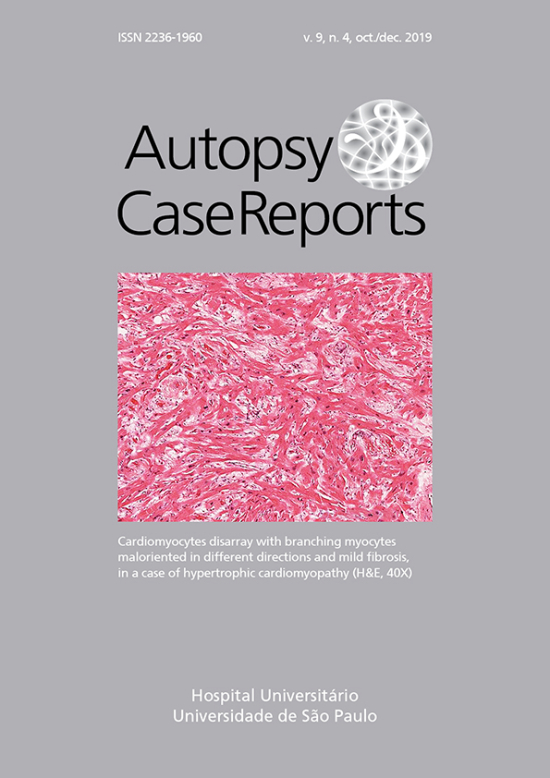Warthin-like mucoepidermoid carcinoma of the parotid gland: a diagnostic and therapeutic dilemma
DOI:
https://doi.org/10.4322/acr.2019.122Keywords:
Salivary Gland Neoplasms, Carcinoma, Mucoepidermoid, Parotid NeoplasmAbstract
Mucoepidermoid carcinoma (MEC) is the most common malignant salivary gland tumor. Although the parotid gland is the most common site of involvement, other major salivary glands and the minor salivary glands—most commonly of the palate—also can be involved. The management of mucoepidermoid carcinoma depends on the grade of the tumor and the adequacy of resection. We present the case of a 56-year-old female presenting a painless progressive cheek mass over 2 months. Imaging and fine-needle aspiration cytology provided the diagnosis of Mucoepidermoid carcinoma. A superficial parotidectomy was done, and the histopathology revealed a predominantly cystic tumor with a bilayered epithelium of oncocytic and basal cells. Moderate nuclear pleomorphism with infiltration of atypical squamous cells in few glandular cysts was seen. Special staining revealed the presence of intracellular mucin. A diagnosis of Warthin-like variant of MEC was made, based on these findings. After the surgical procedures, the patient is disease-free at 8 months of follow-up. The Warthin-like variant is a rare variant of MEC with fewer than 10 cases described in the English literature. Various differential diagnoses include the malignant transformation of Wartin tumor (WT), squamous metaplasia of WT, and metastasis from a distant primary. We emphasize the role of routine microscopy in identifying rare variants of common malignancies. Even though translocation studies are helpful in diagnosis, the typical histopathological findings should confirm it.
Downloads
Published
Issue
Section
License
Copyright
Authors of articles published by Autopsy and Case Report retain the copyright of their work without restrictions, licensing it under the Creative Commons Attribution License - CC-BY, which allows articles to be re-used and re-distributed without restriction, as long as the original work is correctly cited.



